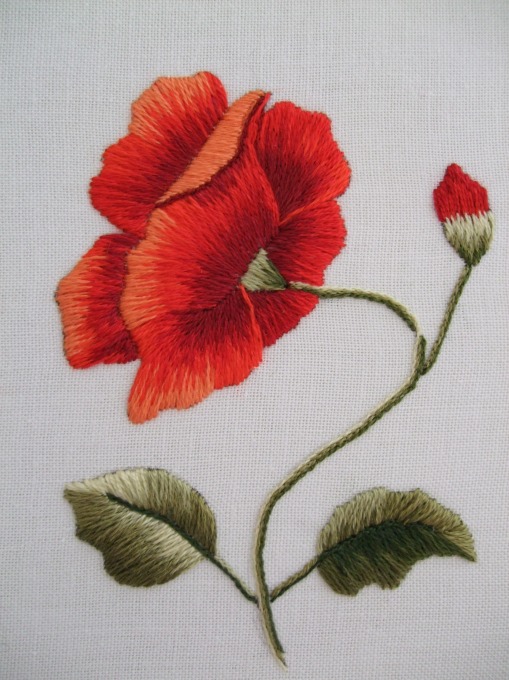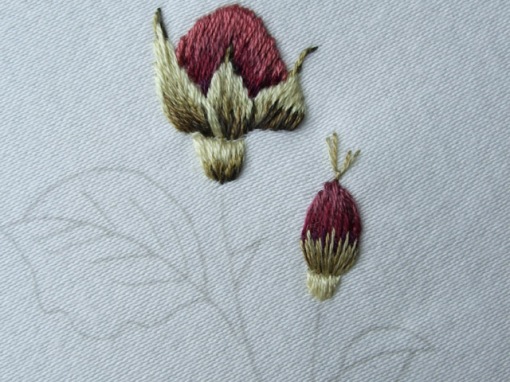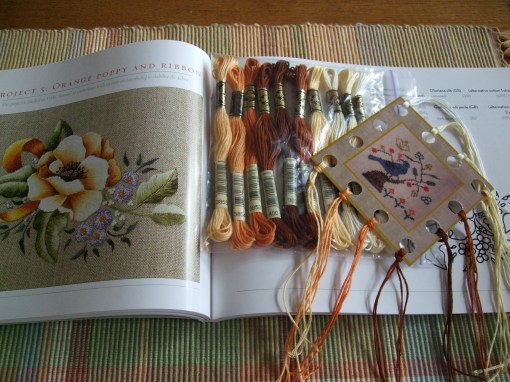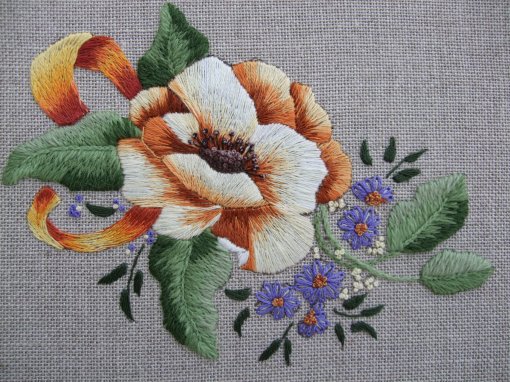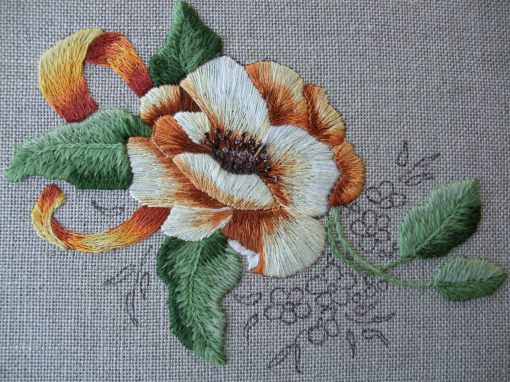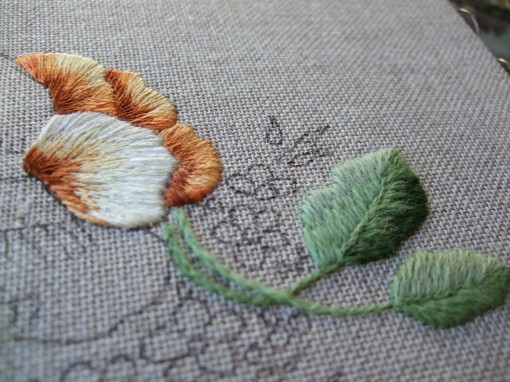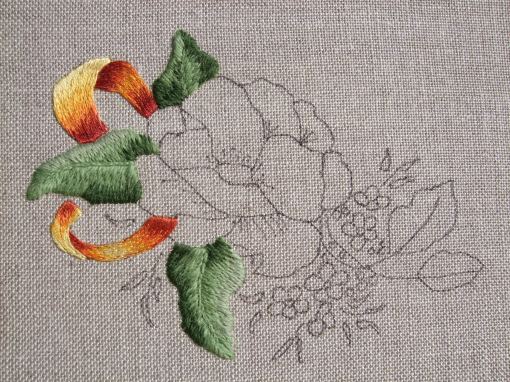Those of you who make things with your hands probably hear this on a fairly regular basis: “Oooo! You’re so clever! I could never make something like that.”
What these poor, unsuspecting, souls don’t know is that our first fumblings in any medium are usually on par with my aforementioned finger painting episode. It is through persistence and perseverance alone that the beginner in a given discipline achieves a satisfactory outcome. Of course, there are a select few who get everything right from the get go in every medium they touch; and we hate them.
Since my mind has not been overfilled with calculations as I plod through the petals of the poppy, I have been trying to distill the beginning learning curve into steps or stages; so I could perhaps explain it to someone who does not have a life in craft.
Please bear with me as I think aloud, and feel free to add your two cents’ worth in the comments.
The 7 stages of discovering a new craft or technique:
Stage 1: gathering the materials, tools, and books; and dreaming. This phase is usually the most fun; and many of us indulge in it far more often than the other six, as is witnessed by the size of the stash.
Stage 2: first fumblings, with great trepidation, and no small amount of confusion. The tools and materials simply will not do what we are asking them to.
Stage 3: delusions of adequacy: “I’m getting the hang of it.” This is the phase where one stops often to admire the evolving piece. It can last for several days, or even weeks.
Stage 4: the scales are lifted from one’s eyes, and flaws appear in the first bits that were worked. Here, some rip out and rework the first part of the project, others choose to live with the imperfection, the better to chart their progress in the new medium.
Stage 5: “Will I ever be any good at this?” One is acutely aware of what is not working, but is powerless to remedy the situation.
Stage 6: “This is taking forever!” At this point, the craftsperson is generally beginning to scan for a new project and many succumb to the temptation to start something else; often in a different medium.
Stage 7: Completion. This stage is frequently skipped, and the project becomes a UFO; living in a basket, drawer, box, or cupboard. No small amount of guilt accompanies non-completion. The late Kathy Cornachio (a very talented weaver, who taught me the basics of tapestry weaving) put this in perspective for me with the following question: “Did you learn what you needed to from the piece? If so, you are finished with it.”
One reason that many neophytes give up making things after a brief try is that they consistently underestimate the length of time that it takes to produce a quality hand crafted item. Here too there are exceptions (like the lovely and talented Dutch lady, who shall remain nameless, who can knit a complex color work dress out of sock yarn in a weekend), but for most of us craft takes time. A lot of time. Trying to hurry it along to meet a self-imposed deadline is counter productive.
At what stage am I with the soft shading? 5.5 – with not much progress to show for this week.

